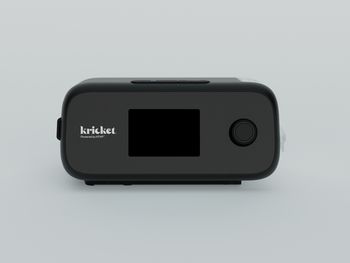
How to get third-party payers out of the exam room
It's important to consider ways you can practice without enduring the problems associated with third-party payers.
Key Points
I also wanted to find a way to reduce fees significantly for uninsured and underinsured patients. For 18 months, I read about practice innovations and gathered data from practice administrators in the Triad Area of North Carolina. I feasibility tested all of the innovations that I read about and combined them into a conglomerate model that is now referred to as the direct pay model. Some have called it a cash practice, which is not entirely accurate because some patients pay with means other than cash. But the key is that we are paid directly by the patient or his or her employer for our services rather than by a third-party payer such as private health insurers or Medicare.
The model is dynamic and we make subtle changes each year, but currently here are the basics: Patients can either be on an à la carte basis (where they simply pay as they go for services) or they can be on an annual subscription, which charges them a flat rate per month and $20 for each office visit. For our practice:
Whether a patient is in the office for 5 minutes or 50 minutes, the basic charge is the same. I put a code on most receipts so that patients with insurance can get reimbursed if they want to file the paperwork themselves. The law of averages works here because if the practice gets $49 for both a 90-minute visit and a 20-minute visit, this will equate to the mean charge for a code 99213, the average level of service for a visit at a traditional practice.
Our practice charges patients an additional cost-based fee for lab tests (nonsubscription model patients) but pays the lab company directly for the tests. We don't have to be concerned about rejected claims due to incorrect or mismatched ICD-9 and CPT codes. Lab companies are willing to negotiate lower lab rates with me because their payment from us is guaranteed, and they realize savings from not billing patients or insurance companies. Discounts may be as much as 50% to 90% off list price, meaning that a lipid panel could cost me less than $5. Other tests have cost even less. Most patients pay an average of $29 for lab tests that would have cost more than $100 if the lab company billed the patient or the insurance company directly.
The model is based on the idea that by significantly reducing overhead and improving collections to nearly 100%, you can charge much lower fees, improve access for patients who might not otherwise be able to afford care, avoid excessive volume, and still have a profitable practice.
This is our 10th year practicing this way, and we still love it! (Please see table: Key features of the direct pay model.)
One question I get very often is, "How would this work in an area like mine?" Some physicians believe falsely that this model will not work as well in a low-income or a rural area. The fact is that 52% of my patients currently have no insurance at all, and the median annual household income is about $35,000. These are not generally wealthy patients who have loads of cash to throw around, as some might assume.
Some physicians believe we have a "concierge" practice. There are some features they share-better service, longer visits with patients, and happier, less-stressed physicians with more time for patients. However, we do not charge fees that the average person cannot afford to pay out-of-pocket. Care for a diabetic, hyperlipidemic, hypertensive patient for 1 year, including all bloodwork, ECGs, visits, and an annual comprehensive wellness exam, comes out to less than what a carton of cigarettes would cost per month. I use this benchmark to determine whether a patient will be able to afford a medication.
Most of our uninsured patients are not Medicaid eligible and, therefore, have limited access to care. Many of these patients are hardworking trades people who cannot afford healthcare insurance premiums. Under the Patient Protection and Affordable Care Act, many have said they will just have to pay the penalty since it is all they can afford. In 2 to 3 years, there will still be a lot of uninsured patients; they will just be paying an extra penalty every year for not being able to afford monthly premiums.
Newsletter
Stay informed and empowered with Medical Economics enewsletter, delivering expert insights, financial strategies, practice management tips and technology trends — tailored for today’s physicians.








